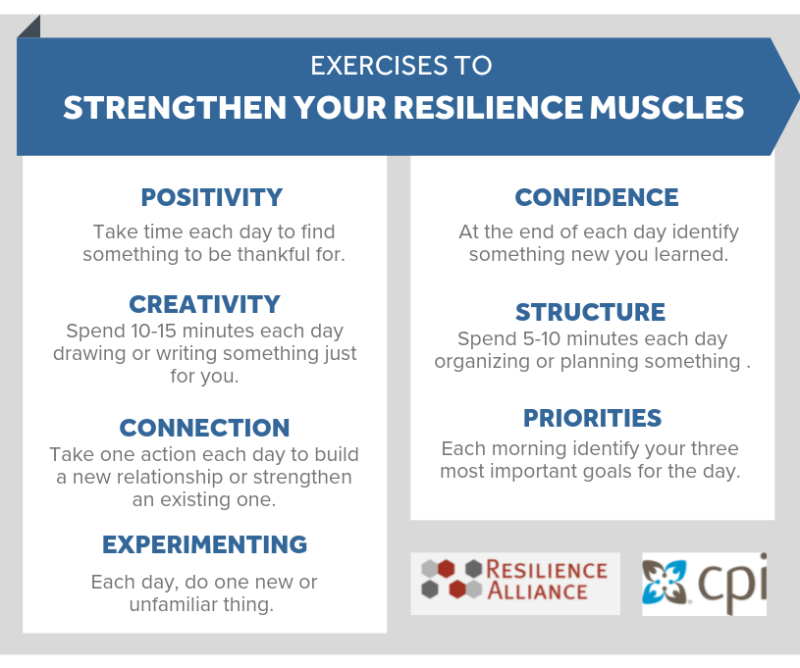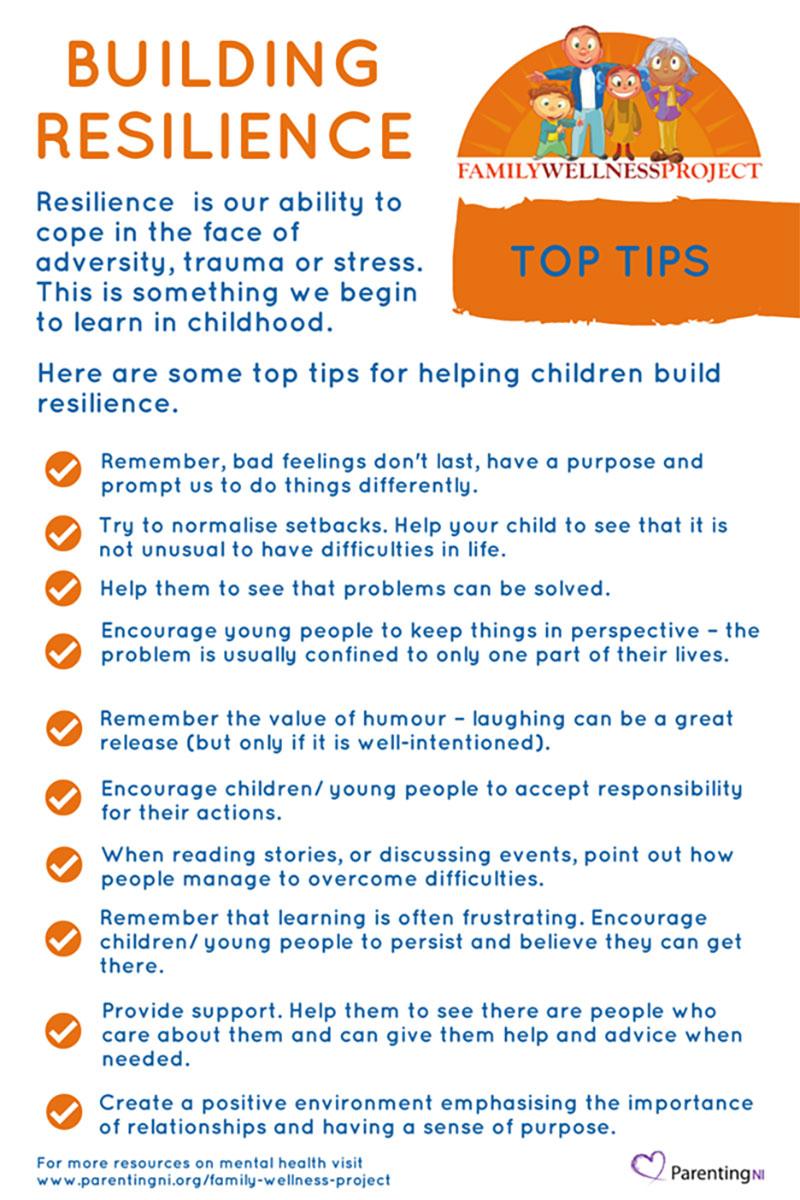How Big is Your Bounce
Our expert this month is DJ Lebo, Chief Executive Officer of the Early Learning Coalition of Flagler and Volusia. She wrote about resiliency and how parents and teachers can foster it in themselves and in the children they see every day.
At a Glance
One thing we know for sure is that every single person in the world has experienced a traumatic event: a death of a loved one, divorce, an accident or abuse. Resilience is the quality that allows people to move beyond trauma and carry on with life. Resilience can be developed in individuals through various intentional strategies.
Science tells us that resilience isn’t something children are born with–it is something that is built when we have at least one healthy relationship with a trusted adult. This relationship protects us through trauma and helps us bounce back. You can be that person for the children in your life. Building resilience starts at birth.
At the Early Learning Coalition of Flagler and Volusia, we have a new resilience campaign called How Big is Your Bounce. We want to help families bounce back from negative experiences easily and quickly by giving them the tools to build resilience. This article will show you how, as a teacher or parent, you can help the children in your life move toward resilience, and how you can bounce back as well.
Focus on:
How Big is Your Bounce emphasizes three important pillars to help children build resilience: attachment, initiative and self-regulation. These three pillars can be used by parents or teachers in the child’s life. We offer tips for how parents and providers can help children build resilience, how parents can build resilience for themselves (which will act as an important model for their children), and how early childhood educators can use the classroom to build resilience for their students.
Attachment
For Children
Parents and providers can build a strong, trusting bond with children that becomes a source of safety for those children. When children have strong, trusted bonds with at least one adult, that bond can help children get through difficult, traumatic events because the attached adult can provide buffering support in the time of difficulty. Here are a few ways you can build a strong bond with the children in your life:
- Take time to actively listen to your children. To encourage conversation, ask only a few questions, such as “How did that make you feel?” “What did you do next?” and then stop to listen. Be sure to listen without offering advice or direction.
- Spend time together. Play outside, inside, while in the car, at the grocery store. You can have a homemade scavenger hunt even while running errands. Have a contest to see who can find blue cars, juice or anything else on your shopping list! This special time builds trusting relationships.
- Be there! Avoid partially listening or being on your phone when your child is talking to you. Help them feel wanted and valued by focusing on them while they are talking or showing you something. Try to be a part of bedtime and mealtime routines whenever possible.
For Parents
We know parenting is the hardest job out there–and the most important! For us parents to be healthy models for our children, we need to make sure we have relationships we can rely on to help us be resilient through difficult times. The more resilient we are, the easier it will be for our children to weather life’s storms. Parents’ resilience can act like a buffer for children. As parents, we can build relationships by:
- Calling a friend, attending community events, library times, support groups, mommy and me clubs, etc.
- Identifying a person we look up to who we would like as a mentor. This person can guide us when the going gets tough.
Initiative
For Children
Children who are taught to value their own initiative-taking are often more resilient. Parents or providers looking to build initiative in children are encouraged to celebrate a child’s strengths, help them see the joy in exploration, and offer them challenges. You can do this by:
- Celebrating a child’s strengths in real time, when you witness them. An example may be “Johnny, I see that you were able to wait to have a cookie until after you ate all of your broccoli.”
- Exploring new things together. An example may be “Diego, let’s go find some daffodils and see if we can count how many flowers we see in the meadow.”
- Offering challenges to children that give them a chance to learn and grow. An example may be “Timone, I see that you have been working to find how that puzzle piece fits in the puzzle. You are really trying hard, keep going, you’ve almost got it!”
For Parents
Parents are their children’s first teachers. If we can build initiative in ourselves, our children will learn from watching us. We can build our own initiative by:
- Asking for help when we are having trouble problem solving challenges.
- Finding a hobby. This helps reduce stress and build confidence.
- Laugh! Laugh! Laugh! When we can take life’s curve balls with levity, they don’t stress us as much. Laughter is the best medicine and reduces stress.
Self-Regulation
For Children
Children’s ability to self-regulate (calm themselves down when they are upset, or cheer themselves up when they are down) is a key part of developing resilience. As adults, we can help teach children to self-regulate in a few ways:
- Encourage children to name their feelings, this will help them process emotions.
- Teach coping skills such as breathing, drawing, singing, walking away for a minute.
- Offer choices when children get frustrated so they feel secure and feel they have an active role in the relationship.
For Parents
Of course, the best way to teach our children is through being an example ourselves. Even though we are often tested to our limits as parents, we can always work to improve our own self-control by:
- Setting limits/boundaries in day to day life. When we show our children that we take quiet time for ourselves, have a no-phone time at dinner, or make and follow through on a commitment to be active every day, they learn to value the freeing nature of self-control.
- Model and demonstrate flexibility in our lives. When we can bend, but not break in the winds of the day, our children learn that resilience comes from accepting what comes their way and moving with it, rather than fighting reality.
- Practice calm-down techniques such as taking a minute, breathing, journaling, singing, taking our time to speak and being quick to listen.
Providers
Early educators and care providers play a big role in building resilience. Children often spend the majority of their waking hours in child care programs. It’s important to make the most of the many opportunities each day brings. When early educators act as a secure base, set up safe and predictable environments and understand what children need to build resilience, they help children build a strong foundation for success!
Teacher as Secure Base
Children will be more resilient when their teachers are a secure base. As an educator, you have the opportunity to be that base, that one caring adult, that helps a child cope. You may never know the source of a child’s stress. That doesn’t mean you can’t help them build the resilience they need to bounce back from it! Being a secure base means:
- Using the child’s name while making positive comments and communicating warm feelings: “I’m happy to see you today La Shawn!” I Love You Rituals are a great way to start a child’s day.
- Empathetically acknowledging feelings and offering solutions: “I see you crying. Are you feeling sad about saying goodbye? I want to help you. Would you like to read your favorite book or draw a picture for grandma?” Children may not answer with words; be sure to watch for non-verbal cues.
- Ask questions that give children the opportunity to share their perspective: “My favorite thing to eat is ice cream. What’s yours? What do you like about it?”
Classroom Design
Classroom environments play a big part in building resilience. Some of the important components of a classroom that fosters resilience are:
- Places to calm down and relax that are accessible to children whenever they need them. Set aside a soft, comfortable space where one or two children can go to regroup. This resource gives practical strategies for helping children and adults learn how to calm down.
- Predictable routines and schedules: The Center for Social Emotional Foundations in Learning offers tips and ideas for creating effective schedules and routines.
- Many of the skills that build resilience are a part of executive function. Here’s a great infographic about executive function and child development and how caregivers can support it.

Resources
- Visit the Center For Resilient Children to learn more and find resources to help with building resilience.
- The Center for Social Emotional Foundations in Leaning offers tips and ideas for creating effective schedules and routines.
- Safe Place Breathing Icons downloadable PDF for adults and children.
- I Love You Rituals are a great way to start a child’s day.
- Executive Function and child development infographic.
- Parenting NI's Family Wellness Project

About the Author

DJ Lebo is the CEO of the Early Learning Coalition of Flagler and Volusia Counties, Inc. She has been with ELCFV for nine years and at the helm for just over six. She has a BBA from Texas Christian University and is working on a Masters in Educational Leadership in Early Childhood at University of North Florida. It is her goal to help others discover what tremendous opportunities we have to make lifelong impacts by focusing our resources on young children and their families.dj-lebo